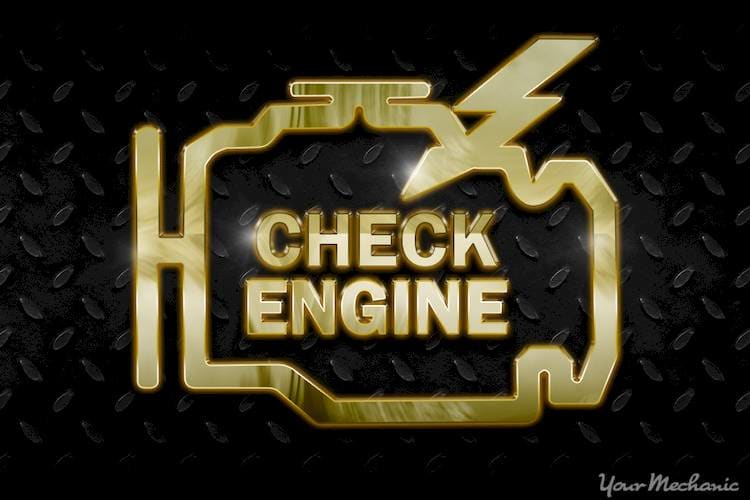P2265 code definition
The P2265 diagnostic trouble code is an indication that there is a range/performance issue with the water in fuel sensor circuit.
Related Trouble Codes:
- P2264 OBD-II Trouble Code: Water in Fuel Sensor Circuit
- P2266 OBD-II Trouble Code: Water in Fuel Sensor Circuit Low
- P2267 OBD-II Trouble Code: Water in Fuel Sensor Circuit High
- P2268 OBD-II Trouble Code: Water in Fuel Sensor Circuit Intermittent
- P2269 OBD-II Trouble Code: Water in Fuel Condition
What the P2265 code means
Small amounts of water from condensation are common and will not usually cause issues with the fuel system. However, too much water in the fuel tank can cause severe damage to engine components and/or the engine itself. The purpose of the water in fuel and the fuel composition sensor is to monitor the amount of water or other substances that are present in the gasoline.
The water in fuel / fuel composition sensor then sends an input signal to the powertrain control module (PCM) regarding the levels of water in the fuel. If the powertrain control module (PCM) receives an input signal that indicates the water in fuel level exceeds 10 percent, the P2265 diagnostic trouble code will be stored and the Check Engine Light will come on.
What causes the P2265 code?
Faulty water in fuel/fuel composition sensor
Water in fuel/fuel composition sensor wiring that is broken, shorted, frayed, disconnected, or corroded
Water in fuel/fuel composition connectors that are disconnected, damaged, or corroded.
Excessive amounts of water in fuel
Faulty powertrain control module (PCM)
What are the symptoms of the P2265 code?
- Check Engine Light is on
- No symptoms present
- Hesitation when accelerating
- Engine misfires
- No start condition
- Sudden changes of speed not initiated by the driver while the car is in motion
- Other fuel system diagnostic trouble codes stored in the powertrain control module (PCM)
How does a mechanic diagnose the P2265 code?
Diagnostic trouble codes should be diagnosed in the order that they appear in the powertrain control module (PCM).
Use an OBD-II scanner to collect all trouble codes that have been stored by the powertrain control module (PCM) as well as freeze frame data.
Inspect the water in fuel/fuel composition sensor wiring for breaks, shorts, frays, loose wires, and corrosion.
Inspect the water in fuel/fuel composition sensor connectors for damage, corrosion, or loose connectors.
Use the OBD-II scanner to clear all diagnostic trouble codes and complete a test drive to see if the P2265 code comes back.
If the P2265 trouble code does come back, check the water in fuel/fuel composition sensor for proper continuity and resistance.
Check the water in fuel/fuel composition sensor ground circuits.
If the water in fuel/fuel composition sensor continuity, resistance, and ground circuit tests pass, use an oscilloscope to watch the waveform pulse of the sensor.
If the waveform pulse of the water in fuel/fuel composition sensor does not fall within the manufacturer’s specifications the sensor should be replaced.
If the waveform pulse of the water in fuel/fuel composition sensor does fall within the manufacturer’s specifications, the powertrain control module (PCM) may be faulty. This is rare, but in the event of a powertrain control module (PCM) failure, it will need to be reprogrammed as well.
Common mistakes when diagnosing the P2265 code
Actual fuel contamination is what commonly causes the P2265 diagnostic trouble code, instead of water in fuel/fuel composition sensor failure. Another common mistake is neglecting to inspect the water in fuel/fuel composition sensor wiring and connectors for damage, corrosion, and loose connections.
How serious is the P2265 code?
A diagnostic trouble code is normally considered serious when it causes driveability issues or a change in performance. Contaminated fuel can cause internal engine damage as well as damage to fuel system components. This will ultimately affect vehicle performance. For this reason, the P2265 diagnostic trouble code is considered serious and should be addressed as soon as possible.
What repairs can fix the P2265 code?
Replace faulty water in fuel/fuel composition sensor.
Repair or replace water in fuel/fuel composition wiring that is broken, shorted, frayed, disconnected, or corroded.
Repair or replace water in fuel/fuel composition connectors that are disconnected, damaged, or corroded.
If the amount of water contamination does not exceed the amount of gas in the fuel tank, a fuel additive can be used to remove excessive amounts of water in fuel.
If the amount of water contamination does exceed the amount of gas in the fuel tank, remove the contaminated gas using the immediate displacement process (siphoning out contaminated gas while simultaneously adding high octane gas.
Replace and reprogram faulty powertrain control module (PCM).
Fuel contamination is usually the cause of the P2265 diagnostic trouble code and using an additive to remove the water or replacing the contaminated fuel all together is a good way to repair this problem. Rust in the fuel system, damage to pistons, damage to cylinder walls, damage to fuel lines, damage to filters, damage to fuel injectors, fuel pump damage, head gasket failure, and engine failure are some issues that could arise with fuel contamination.
Need help with a P2265 code?
YourMechanic offers certified mechanics who will come to your home or office to diagnose and repair your vehicle.
Get a quote and book an appointment online or speak to a service advisor at 1-800-701-6230.
Check Engine Light
trouble codes
P2265
No more waiting rooms! Our mechanics will come to you to diagnose and fix the P2265 code.





